From Gaye Holud to Bou Bhaat: Your Comprehensive Guide to the Modern Bengali Wedding
Curious about Bengali weddings? From the Gaye Holud glow to the white saree and topor twist, here’s Laali Ladki’s no-nonsense guide to Bengali wedding traditions, modern trends, and what actually matters if you’re planning or attending one in the US.
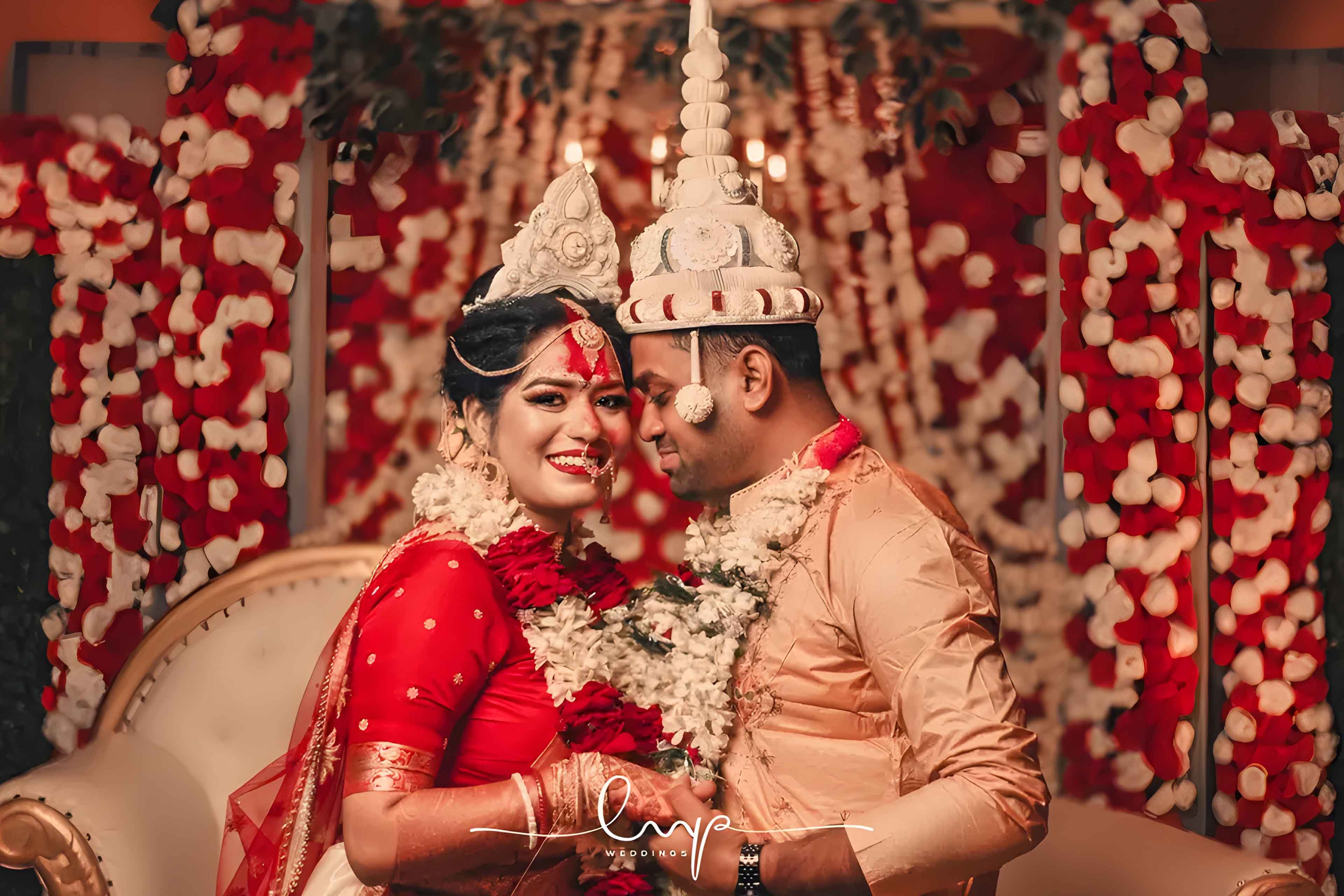
last updated: June 16th, 2025 | 9-minute read
So you got a Bengali wedding invite—or you’re planning one. First off, breathe. Whether you’re Bengali-ish, Bengali-adjacent or just Bengali-curious because your friend’s cousin’s brother decided to marry into a Bengali family—welcome. You’ve officially unlocked a world where poetry and fish curry hold the same VIP status as designer lehengas and gold jewelry.
Here’s the thing: Bengali weddings aren’t your run-of-the-mill South Asian shaadi. They’re quieter in some ways, louder in others—think subtle elegance meets unapologetic community chaos. There’s a lot of rice, a healthy dose of Rabindranath Tagore references (just nod knowingly if you’re not sure who that is yet), and ceremonies that sometimes feel like theatre—but with more turmeric and aunties giving you side-eye.
This isn’t your grandma’s history lecture. I’m not here to bore you with pages of mythology no one remembers—this is your survival guide for what to expect, what to wear, when to clap, when to eat, and when to just smile politely and pretend you understand the chants. Because half the time, even we don’t.
So bookmark this. Share it with your cousin who thinks all Desi weddings are the same. Or hey, sign up on Laali.co to find more guides (and vendors) who get the vibe without side-eyeing your modern twist on tradition. Let’s get into it—from Gaye Holud to Bou Bhaat, we’ve got you covered.
- Ch. 1 - The Pre-Game: Bengali Pre-Wedding Events
- Ch. 2 - The Main Event: Wedding Day Rituals & Procession
- Ch. 3 - The After Party: Post-Wedding Events
- Ch. 4 - Not One-Size-Fits-All: Diversity & Fusion Bengali Weddings
- Ch. 5 - Guests, Don’t Panic: What to Wear, Do & Never Do
- Ch. 6 - The New Normal: Modern Trends & US Adaptations
- FAQ Section
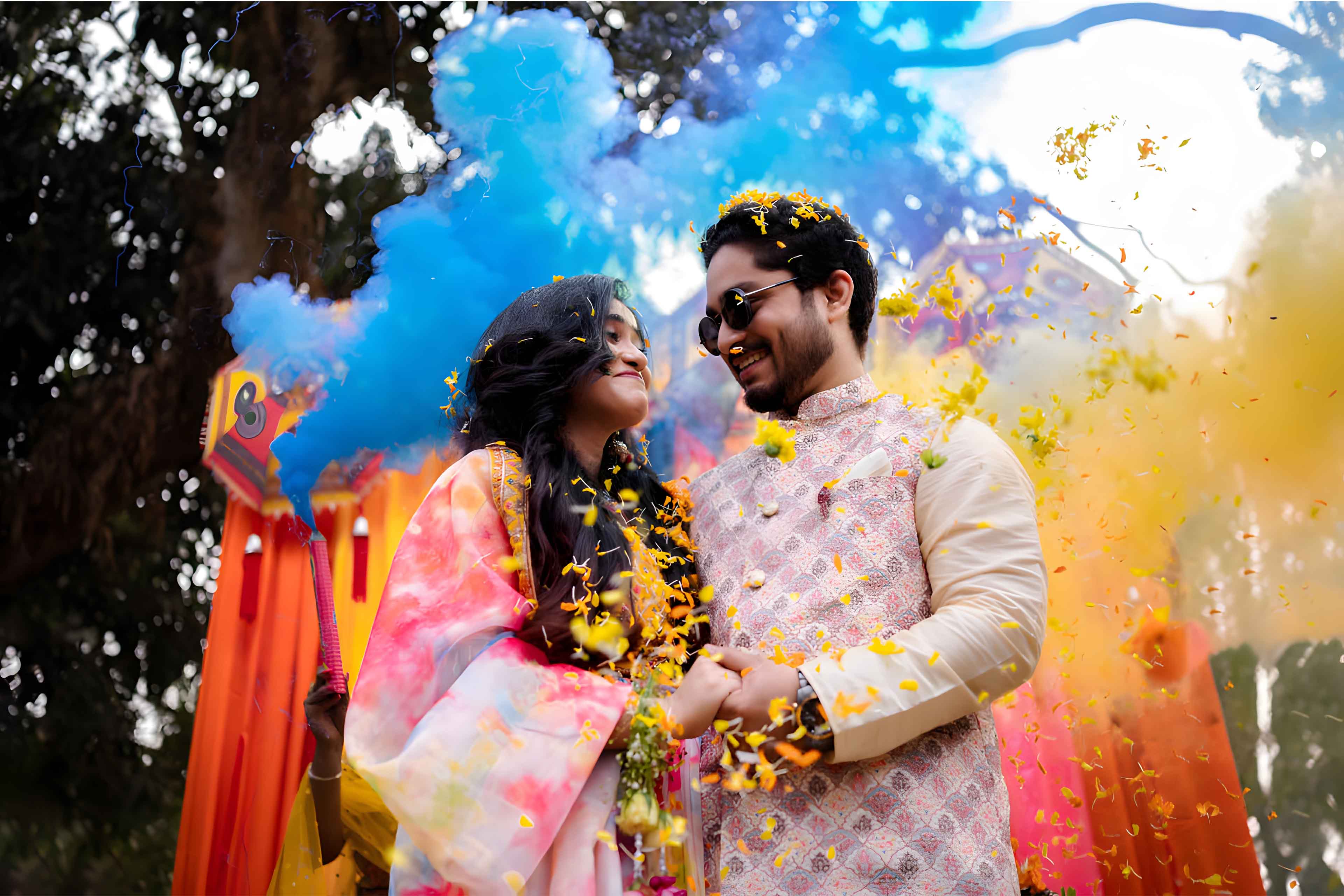
Chapter 1: The Pre-Game—Bengali Pre-Wedding Events
Before you see the topor and the big sindoor moment, there’s a whole lineup of pre-game rituals that warm up a Bengali wedding. Some families go full traditional, some pick and choose—but here’s what usually makes the cut.
Aiburo Bhaat: The Last Solo Feast
Think of Aiburo Bhaat as the Bengali version of your last solo meal—except it’s not solo at all. The bride or groom gets fed an obscene amount of rice, fish, sweets and more rice (did I mention rice?) by friends and family. It’s basically a “congrats, you’re about to share your food forever” celebration—aunties and cousins included.
Ashirbaad: Blessings, Gold & Sweet Promises
Next up, Ashirbaad. This is when the elders bless the couple with rice, durba grass, sweets and—let’s be honest—usually a little gold if the family’s feeling generous. It’s soft, emotional and might happen at the bride’s or groom’s house—or both. Some families keep it small, others invite half the neighborhood. It’s all about showing approval and showering the couple with the literal and figurative good stuff.
Nandi Mukh & Dodhi Mangal: The Early Birds
Not every Bengali wedding does these, but you might hear about them. Nandi Mukh is a ritual where the family remembers ancestors and seeks blessings—it’s usually a priest-led affair at home. Dodhi Mangal happens at dawn (yes, before you’ve even opened your eyes) where the bride and groom eat sweet curd and rice—think of it as fuel for surviving the day’s marathon of rituals.
Gaye Holud: The Turmeric Splash
Here’s where it gets fun. The Gaye Holud is the iconic Bengali turmeric ceremony—similar to the Haldi but with its own twists. The bride (and sometimes the groom, in separate events) gets slathered in turmeric paste by family and friends. It’s messy, bright and practically an Instagram rite of passage now. Pro tip: wear clothes you won’t mind turning yellow for eternity.
Paka Dekha & Engagement: Making It Official
Back in the day, Paka Dekha was the OG “meet the parents.” It’s the formal meeting where both families agree on the wedding—sometimes done with an engagement ring, sometimes just an exchange of sweets and promises. These days, it’s often wrapped into an engagement party with way too many selfies and Pinterest-inspired decor that looks cute for ten minutes before the kids knock it over.
Of course, the modern take on these is flexible—Zoom Ashirbaads happened (thanks pandemic), co-ed Gaye Holuds are more common, and some couples ditch the fuss for a combined event with both families. However you do it, remember: Bengali weddings are about the little rituals just as much as the big ones—and Laali’s here to break them down so you don’t smile awkwardly in the wrong spot.
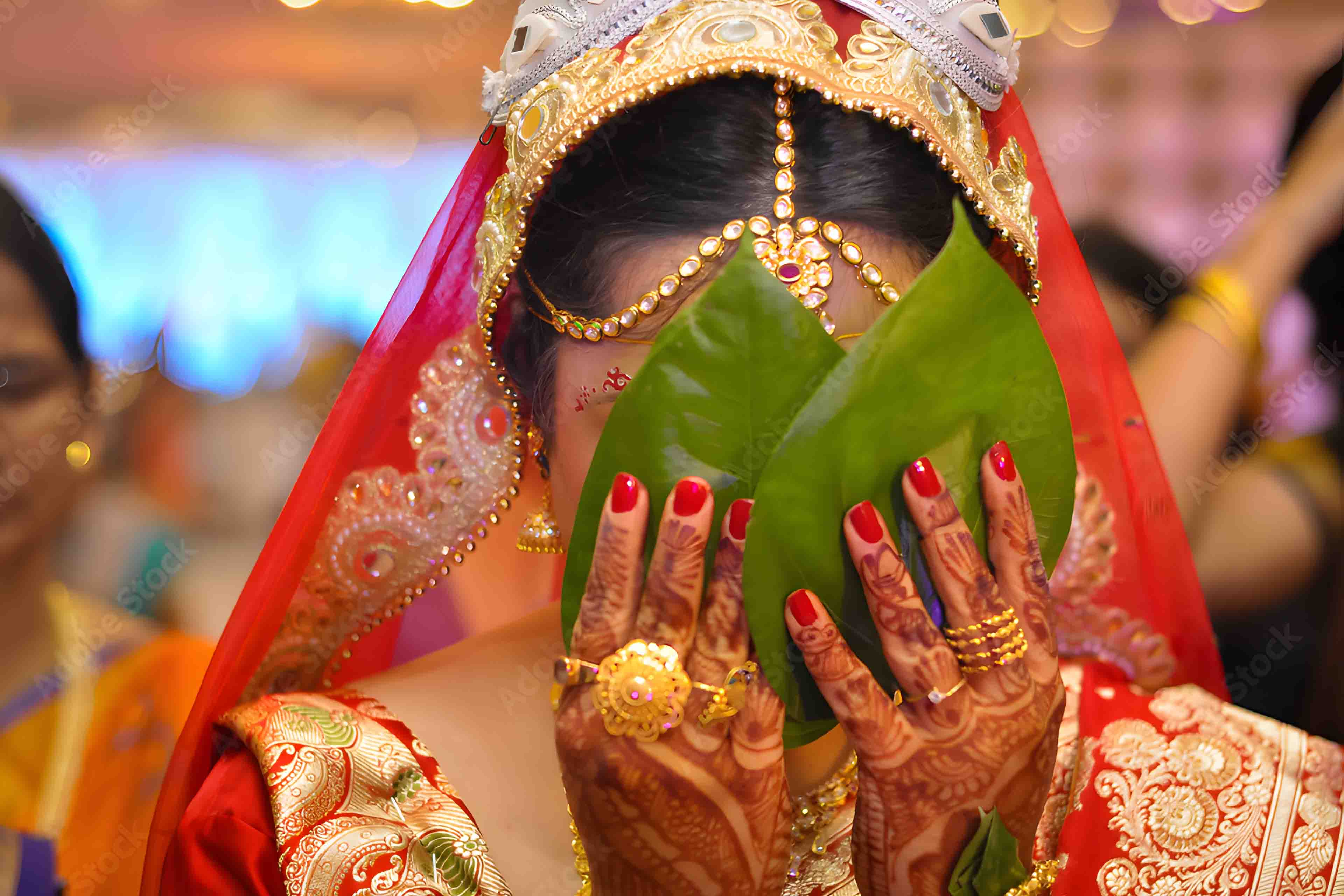
Chapter 2: The Main Event—Wedding Day Rituals & Procession
Alright, you survived the turmeric and the ten thousand family photos—now it’s showtime. The wedding day itself is where Bengali weddings flip between quiet symbolism and “did that just happen?” moments. Here’s what you’re signing up for.
Bor Jatri & Bor Boron: The Groom’s Grand Entrance
First up: the Bor Jatri. This is when the groom’s crew—cousins, uncles, random toddlers—arrive at the bride’s place, usually late enough to keep the bride’s side checking their watches. The bride’s fam welcomes them with a Bor Boron, which means greeting the groom with sweets, arti, and maybe a playful negotiation over entry. Drama level: mild but Instagrammable.
Subho Drishti: Eye Contact, But Make It Epic
Here comes one of the stars of the show: Subho Drishti. Picture this—the bride hides her face behind betel leaves while seated on a low wooden stool called a piri. She’s lifted by her brothers or cousins and circles the groom seven times (sometimes three, depends who’s counting). Then—cue the drumroll—she drops the leaves for that first dramatic look. Think Bollywood slow-motion but with more aunties giggling in the background.
Mala Badal: Garland Swipes & Giggles
Next, Mala Badal. This is the Bengali answer to “I swipe right.” The bride and groom exchange floral garlands—first the bride tries, then the groom, repeat. It’s playful, competitive and usually involves cousins hoisting each side up to make the other one reach higher. A subtle reminder:
Sampradan, Yagna & Saptapadi: Sacred Threads & Circles
Now for the classic Hindu rites. Sampradan is when the bride’s guardian gives her hand to the groom—literally tying them together with a thread. They sit by the sacred fire (Yagna) and recite vows with the priest leading the chants. Then comes Saptapadi, or Saat Paak—the couple circles the fire seven times, symbolizing promises of friendship, respect and “I’ll let you control the Netflix queue. Sometimes.”
Kusumdinge & Sindoor Daan: The Final Flourishes
One ritual you may not hear about much is Kusumdinge—where the couple tosses puffed rice into the sacred fire. It’s a symbolic offering, and honestly, an underrated photo op. The big finish? Sindoor Daan. The groom applies sindoor (vermilion) in the bride’s hair parting—it’s the “yep, we’re officially hitched” moment. Bring tissues, especially if the aunties start weeping in unison.
Different Faiths, Same Celebration
Quick reality check: Not all Bengali weddings are Hindu. Muslim Bengali weddings have a Nikkah—the official Islamic marriage contract, signed in front of witnesses—and a Walima, which is basically a reception with food that’ll make you question your life choices if you skip breakfast. Christian Bengali weddings often include church vows plus cultural add-ons—think sarees at church, hymns and a mix of East-meets-West rituals. No matter which version you’re attending, you’re getting poetry, community chaos and enough food to keep you full for a week.
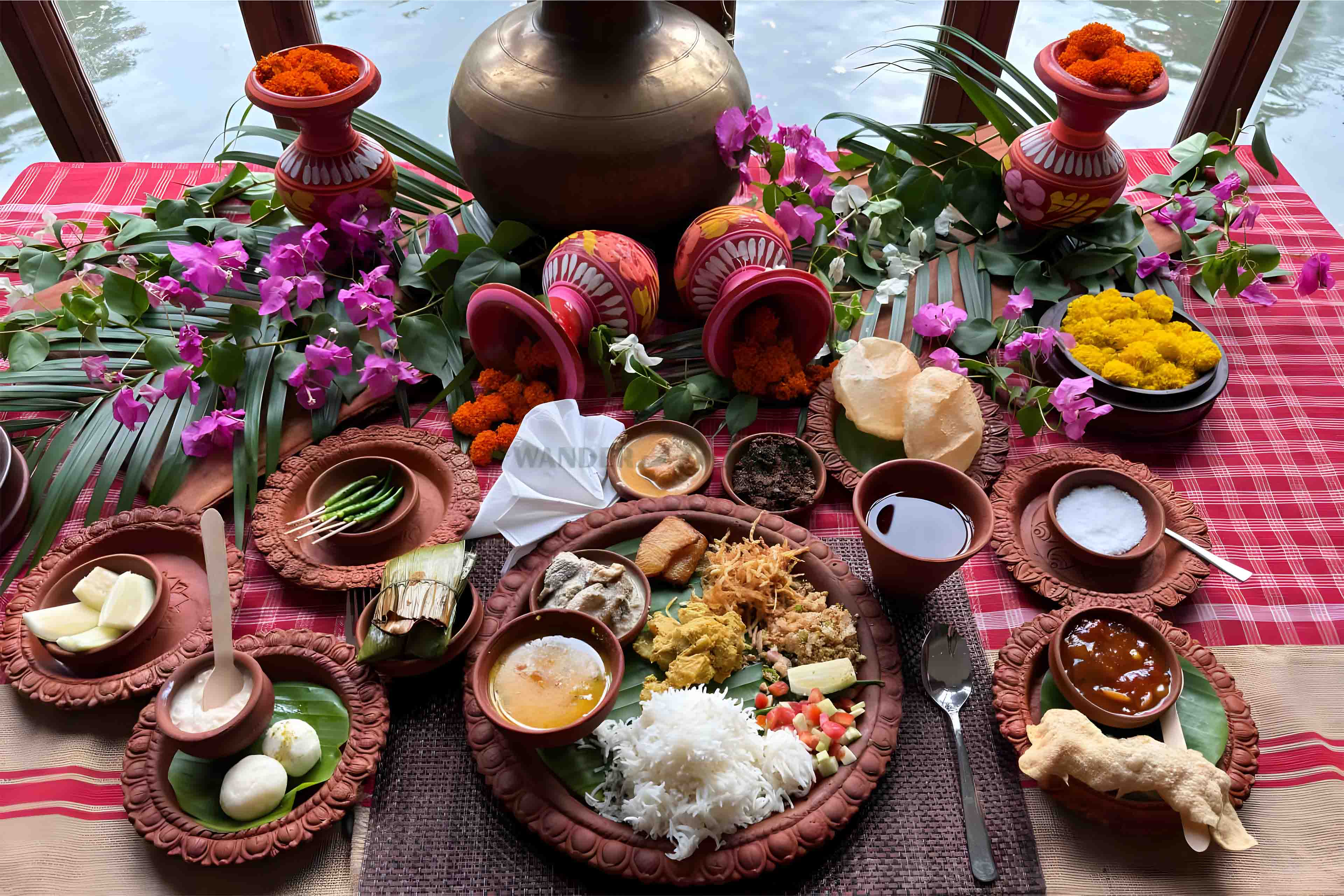
Chapter 3: The After Party—Post-Wedding Events
So, you’ve witnessed the betel leaf reveal, the garland battles and the sacred fires. Think it’s over? Please. A Bengali wedding, , like everything Desi, is basically a trilogy—the final chapter comes with its own set of tissue moments, rice feasts and yes, more excuses to eat like you haven’t for days.
Biday: The Goodbye That Isn’t Really Goodbye
Let’s start with Biday—the send-off. This is where the bride says bye to her childhood home. There’s usually tears, hugging, emotional farewells, and that moment where even your stoic uncle gets suspiciously misty-eyed. It’s equal parts bittersweet and sweet-sweet—so don’t stand there awkwardly; offer tissues if you’ve got ‘em.
Badhu Boron: Welcoming the New VIP
Once she arrives at her new home, it’s Badhu Boron—literally “welcoming the bride.” The new in-laws greet her with a tray of sweets, lamps, or milk and honey (yes, symbolism overload, we know). There might be playful rituals like dipping her feet in alta to leave red footprints—because apparently “welcome” means “decorate the floor with your feet.” Cute, right?
Bou Bhaat: The Official Rice Banquet
The next big one is Bou Bhaat. Picture this: the bride serves rice to her new fam, officially proving she’s now part of the household. Then the in-laws return the favor with a feast that could feed a football team. If you’ve survived on snacks all morning—congratulations, this is your reward.
Reception Reboots: Because One Party Isn’t Enough
And these days, especially in the US, couples sometimes throw an extra reception for friends who didn’t make the main guest list—or just to flex that lehenga one more time. Think rooftop cocktail hour, second cake, Spotify playlist, zero chanting—modern Bengali couples know how to mix old and new without apologising for it.
Walima & More: Bonus Rounds
For Muslim Bengali families, you might see a Walima—a big community feast after the Nikkah. It’s the reception sequel, with all the uncles, second cousins, and random plus-ones who just came for the biryani. Want a deeper dive on Walimas? Check out my Pakistani weddings guide—same vibe, different playlist.
So, next time you’re invited to the “Bou Bhaat” or you’re planning one—just remember: it’s not the awkward afterthought. It’s the encore. And if you’re hunting for a caterer or decorator who won’t mess up your rice mountain, you already know—Laali.co is one click away.
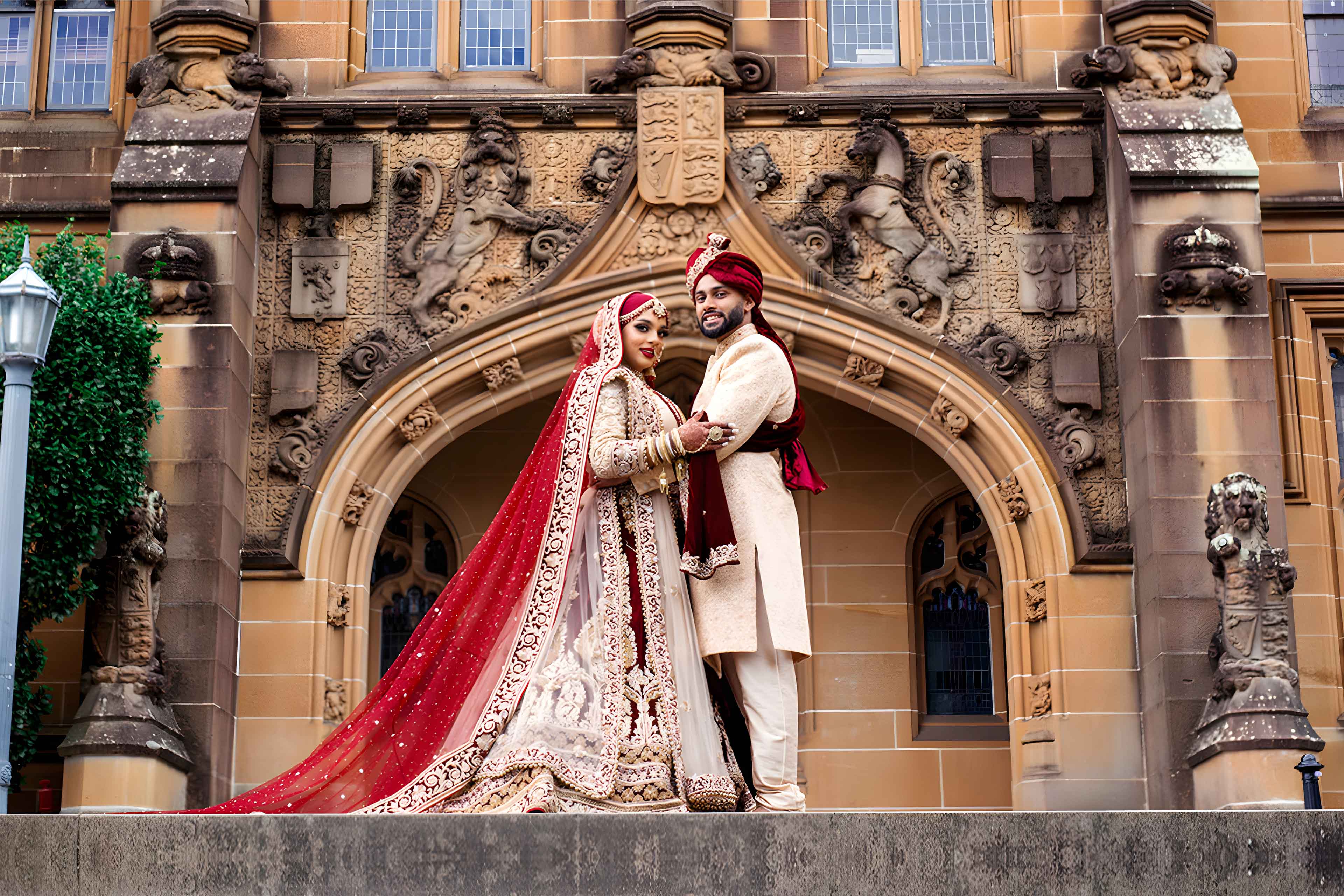
Chapter 4: Not One-Size-Fits-All—Diversity & Fusion Bengali Weddings
If you thought every Bengali wedding looks like your mom’s dusty photo album from 1985—let’s fix that real quick. Bengali weddings today are as layered as a good biryani: tradition on top, modern twists underneath, and plenty of regional spice in between.
Bangals vs Ghotis: What’s the Fuss?
First, a mini crash course. Bangals and Ghotis—no, they’re not rival football teams (though sometimes it feels like it). Bangals trace roots to East Bengal (now Bangladesh); Ghotis are West Bengal natives. The difference shows up in subtle things—accents, fish preferences (hilsa vs prawns, fight me), even the playlist at the reception. So if your new in-laws throw a side-eye when you confuse the two—now you know.
Mixed Culture? Bring It On
Next, the new classic: the mixed-culture wedding. Maybe your Bengali cousin is marrying a Punjabi or your bestie is saying “I do” to a non-Desi boo. Cue the spreadsheets and WhatsApp groups because blending two cultures can be a beautiful chaos. It means managing that one uncle who wants full traditional rituals while your partner’s fam wants a cake cutting and first dance. Spoiler: you can have both—and still keep the Gaye Holud messy enough to stain your jeans forever.
Fusion Rituals: Picking What Works
Modern couples are cherry-picking rituals like they’re at a buffet. A bit of Subho Drishti, skip the dodhi mangal, keep the Mala Badal but swap the yagna for a vow exchange under a floral arch—zero judgement. There’s no wedding police (unless you count the random aunty brigade, but you’re a grown adult, you’ll be fine). Do what feels right for you and your partner—that’s the new tradition.
Faith Differences: Respecting the Remix
Bengali weddings come in all faith flavours: Hindu, Muslim, Christian and the very real interfaith mashup. One side might want a Nikkah, the other a Sindoor Daan—the modern vibe is to honour both without forcing anyone into a corner. Some couples split ceremonies over two days, some merge bits into one celebration. It’s your love story—you get to remix the rituals.
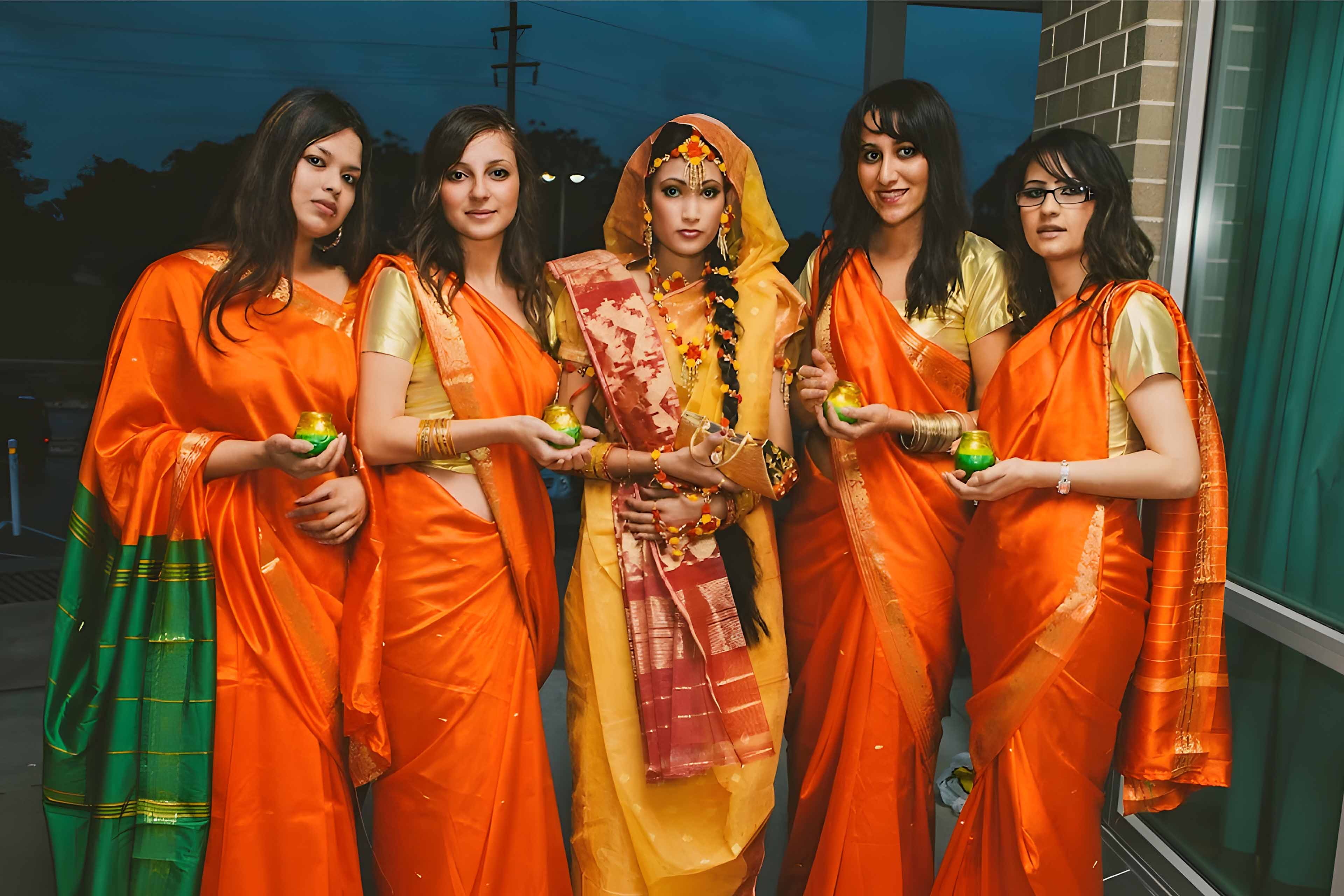
Chapter 5: Guests, Don’t Panic—What to Wear, Do & Never Do
So, your invite’s in hand, your mom’s asking if you packed enough safety pins, and you’re low-key sweating about what to wear. Deep breath—here’s Laali’s cheat sheet so you don’t end up committing an accidental wedding faux pas that gets you immortalised in family gossip.
Dress Code 101: Saree, Kurta, or “Seriously, Not in White”
If you’re Desi, you probably know this drill. A saree or lehenga for women, kurta-pajama or sherwani for men—easy. If you’re non-Bengali or just can’t be bothered to drape nine yards of silk without help, a classy long dress or formal suit works too. For Hindu weddings, don’t wear white—that’s for funerals (and sometimes the bride’s actual white saree). Confusing? Yep. Just avoid full white outfits unless you’re specifically told otherwise.
Jewelry: When in Doubt, Go Gold
Bengalis love gold like we love rice—endless and shiny. If you want to blend in, gold jewelry is the safe bet. You don’t need to raid your mom’s locker but a statement necklace or chunky earrings can help you feel the part. Gentle tip: fake gold is totally fine. Aunties might judge but your wallet won’t.
Gifts: Cash is King
Wondering what to bring? Cash is the universal love language here. Slip it into an envelope, add a small sweet box if you’re feeling fancy, and you’re good. The amount? Use your best judgement—anything from $50 to $200+ depending on your closeness to the couple. And no, you don’t need to haul a giant box from the registry if you’re giving cash—nobody wants to lug a blender in a saree.
Do’s & Don’ts: Keep Your Shoes & Ego Ready
Yes, your shoes might get stolen during the ceremony—it’s a thing. It’s playful, it’s annoying, it’s tradition. Don’t panic. Also, respect elders: a polite nod, folded hands, maybe a “Nomoshkar” if you’re brave. Not every event is open invite—the Gaye Holud might be, the intimate rituals may not. When in doubt, ask.
Food & Etiquette: Eat Like Nobody’s Watching
If someone insists you try the fish curry, just do it. And yes, if everyone else is eating with their hands, join the party. There’s no medal for awkwardly poking rice with a fork while everyone else is wrist-deep in curry bliss.
Stay polite, stay curious, dress bright, eat lots—and you’ll leave the wedding with stories, full bellies and maybe slightly yellow clothes (thanks, turmeric). For more survival guides and vendors who get it, you know the drill: our blog is your secret weapon.
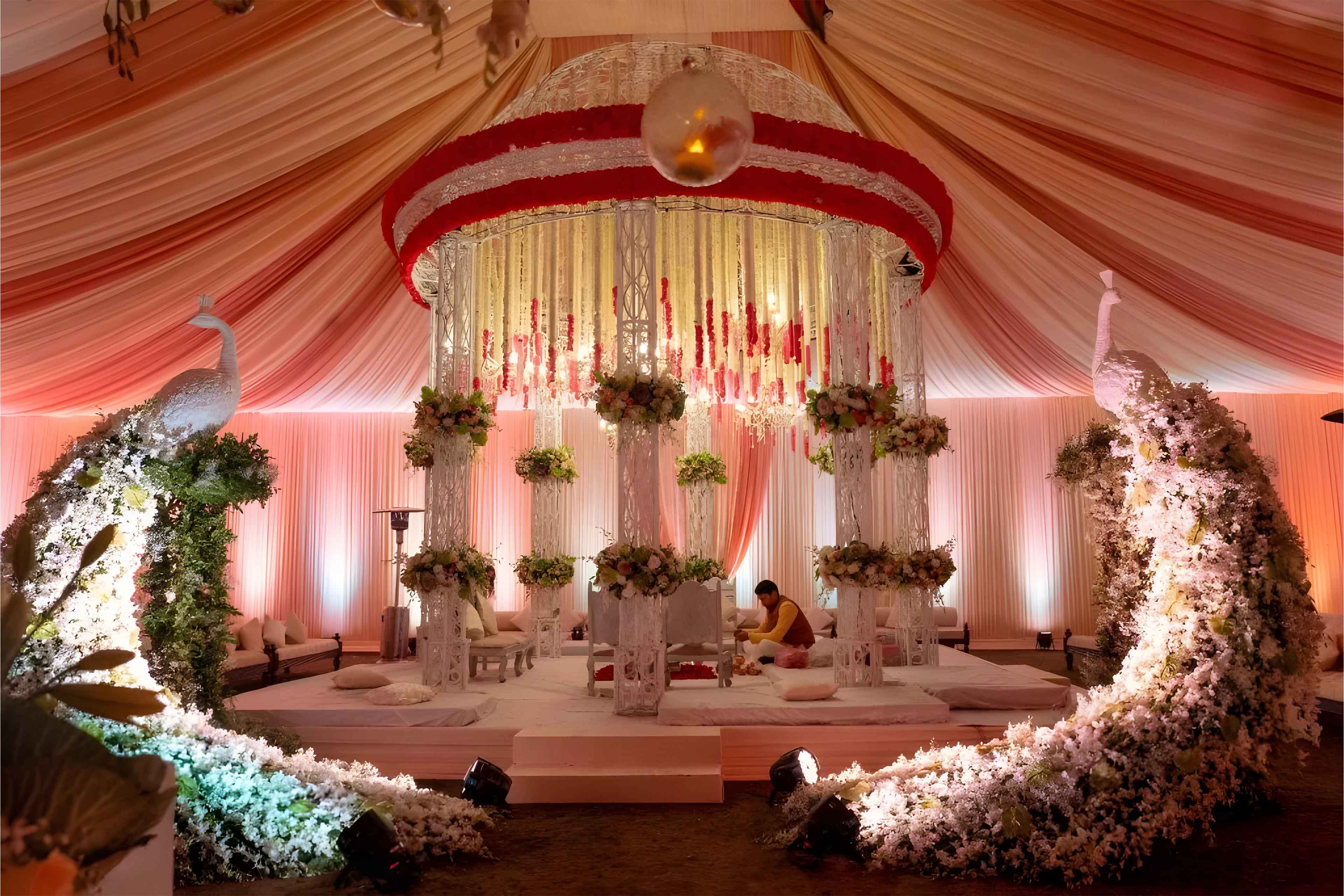
Chapter 6: The New Normal—Modern Trends & US Adaptations
So, you’ve got the invite, you know the rituals, and your outfit’s pinned tighter than your Pinterest wedding board. But how does all this play out when a Bengali wedding happens far from Dhaka or Kolkata—say, in Dallas or New Jersey? Let’s decode the diaspora twist.
Smaller Crowds, Bigger Flexibility
One big shift: guest lists shrink, creativity grows. Modern Bengali couples in the US often trade 500 relatives for 150 close friends, co-workers, and neighbours who swear they once tasted mishti doi.
Traditions: The Non-Negotiables
Some customs just don’t get left behind. The bride’s Sankha Pola (red and white bangles) still clink on her wrists. The Potto Bastra (sacred wedding saree) still drapes tradition in all its silk glory. Couples might ditch some events but the core symbols—like that sindoor moment—stay on, grandma-approved and millennial-endorsed.
Style Remix: Old Meets New
Today’s Bengali bride might rock a designer lehenga instead of a classic red Banarasi saree—or mix them up mid-event. Grooms? Kurtas with sneakers, sherwanis with pocket squares. And if you want to slip into a jumpsuit for the after party—Laali says, go off.
Food, Decor & Beats
Food? Still fish and rice galore but don’t be shocked if there’s a vegan taco truck parked next to the chingri malai curry. Decor’s gone from marigold overload to minimalist backdrops and LED florals. And the entertainment? You’ll find baul singers crooning folk tunes right before the DJ drops the latest Bollywood hit. Best of both worlds, truly.
Planning & Finding Your People
Here’s the real trick: balancing your mom’s dream guest list, your dad’s wallet, and your Pinterest board’s champagne taste. It’s a dance—pick your battles, plan early, and invest in vendors who actually get your cultural context. A clueless DJ or a caterer who calls fish curry “exotic stew” is a vibe killer.
Psst… you know Laali’s got your back for that, right? Check out our vendor list and thank me later.So there you have it—Bengali weddings: layered like biryani, unpredictable like your auntie’s side-eye, and forever open to your own remix. Whether you’re hosting one, planning one or politely gatecrashing with a plus-one, remember this: the vibe is warm, poetic, and always a little chaotic in the best way.
Traditions evolve, outfits change, menus expand—but the heart of it all? Family, food, poetry and promises that outlive the selfies. So wear the Sankha Pola, pick the Potto Bastra, book that rooftop DJ—or don’t. It’s yours to write.
Ready to plan yours or crash one like a pro? Save this guide, stay nosy and keep Laali.co in your back pocket when you’re ready for the real party. Celebrate love, respect tradition, make it yours—Laali’s got you. See you at the next shaadi.
xoxo,
Laali Ladki
FAQ: You Asked, Laali Answered
Classic Bengali weddings can stretch from two to five days if you count every little pre-game and after party—from the Aiburo Bhaat feast to the final Bou Bhaat rice blowout. In the US, though, many families bundle it into a weekend marathon with key rituals condensed to fit everyone’s PTO.
Good news: you don’t have to drape a saree blindfolded. A bright, formal dress or a long skirt with a fancy blouse works fine for women. Men? A crisp suit or a kurta if you’re feeling cultural. Just don’t rock up in all-white unless you’re the bride or you love awkward stares—trust me.
Like all weddings, it’s a “how long is a piece of string?” situation. In the US, a full-blown Bengali wedding with multiple events can easily hit $30k–$100k—or more if you go full royal. But modern couples get creative: smaller guest lists, hybrid ceremonies, and buffet-style catering keep budgets less scary.
Traditionally, not always—the focus is more on the Sindoor Daan, Mala Badal and sacred vows. But many modern Bengali couples add a ring moment at the engagement (Paka Dekha) or slip it into the main ceremony for the photo op. Instagram needs what Instagram needs.
Yes! Cash in an envelope is the safest bet—it’s practical, appreciated and saves everyone a return trip to the store. If you want to add sweets or a small thoughtful gift, go for it. Pro tip: skip the toasters—they just want your blessings and a crisp bill or two.
Mostly, yes—but check your invite or ask your host. Big bashes like the Gaye Holud or reception are usually open season. More intimate rituals—like the Dodhi Mangal at dawn or the actual wedding vows—might be tight-knit family affairs. When in doubt, RSVP smart and don’t show up unannounced with a plus-five. Aunties talk.
Depends on the family vibe and faith. Some Bengali Hindu weddings go big on dance floors and open bars, especially in the US where couples blend Desi fun with Western party spirit. Others skip the booze but keep the dance—think Bollywood bangers, folk Baul music or DJ drops. If you’re not sure, ask before you BYOB your whiskey flask in your clutch.
Right here, friend. If you’re after caterers who won’t ruin your fish curry, photographers who get the Subho Drishti shot, or decorators who know the difference between marigolds and mess—Laali.co has you covered. Bookmark it now, thank me later.
Absolutely. Pakistani weddings are often big, inclusive community affairs. Just be respectful—especially during religious moments like Quran recitations or duaas. If there’s a prayer area, observe quietly or step aside. And if you’re unsure what to do? Follow the aunties—they know everything.
Right here, bestie. Laali.co has curated vendors who actually understand Pakistani wedding culture—whether you need halal catering, mehendi artists, or photographers who won’t miss the rukhsati tears.
Featured
Desi Weddings
Find Culturally Capable Vendors
You’re not just having a wedding, you’re having a South Asian wedding. From hosting multiple events to incorporating ancient traditions, there’s a lot that will make your wedding unique. With Laali, you can find vendors who get it and have experience making South Asian weddings spectacular!
Connect With Us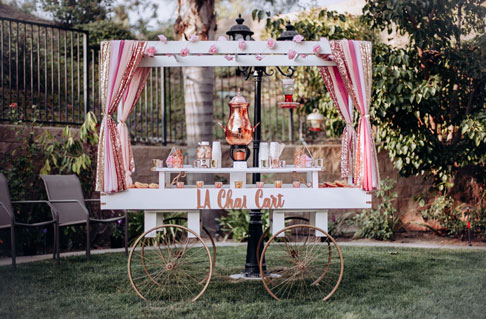

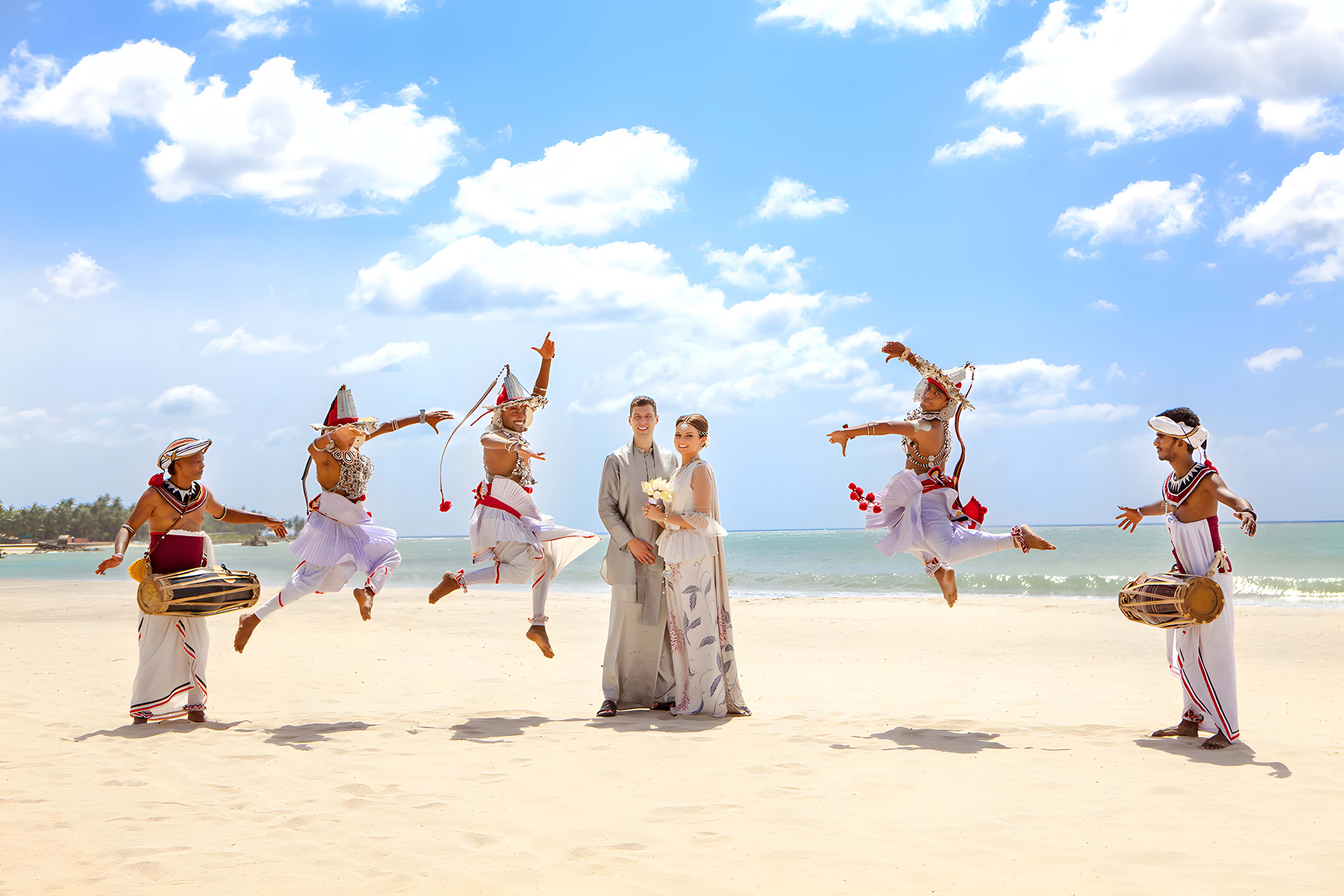
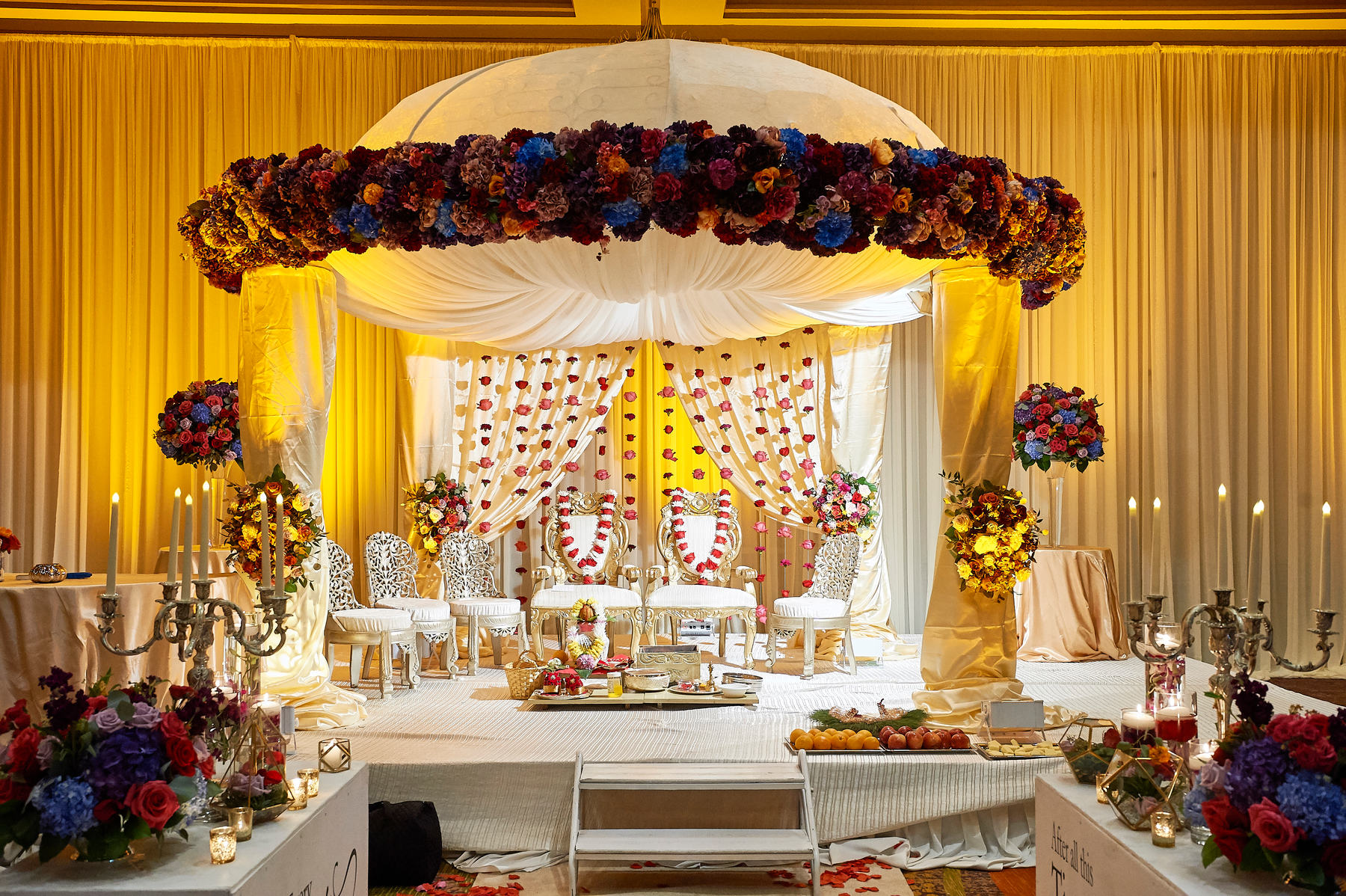
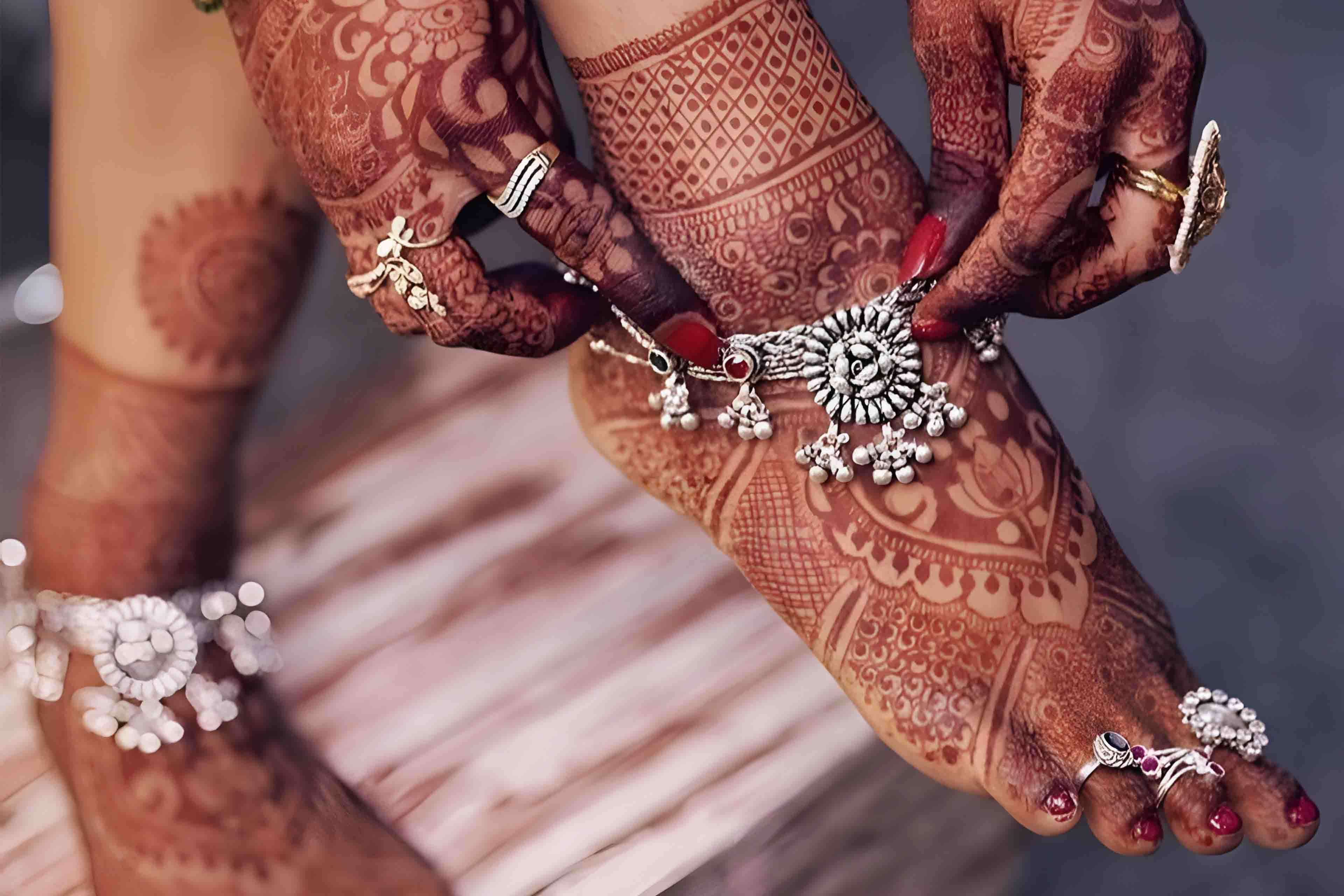
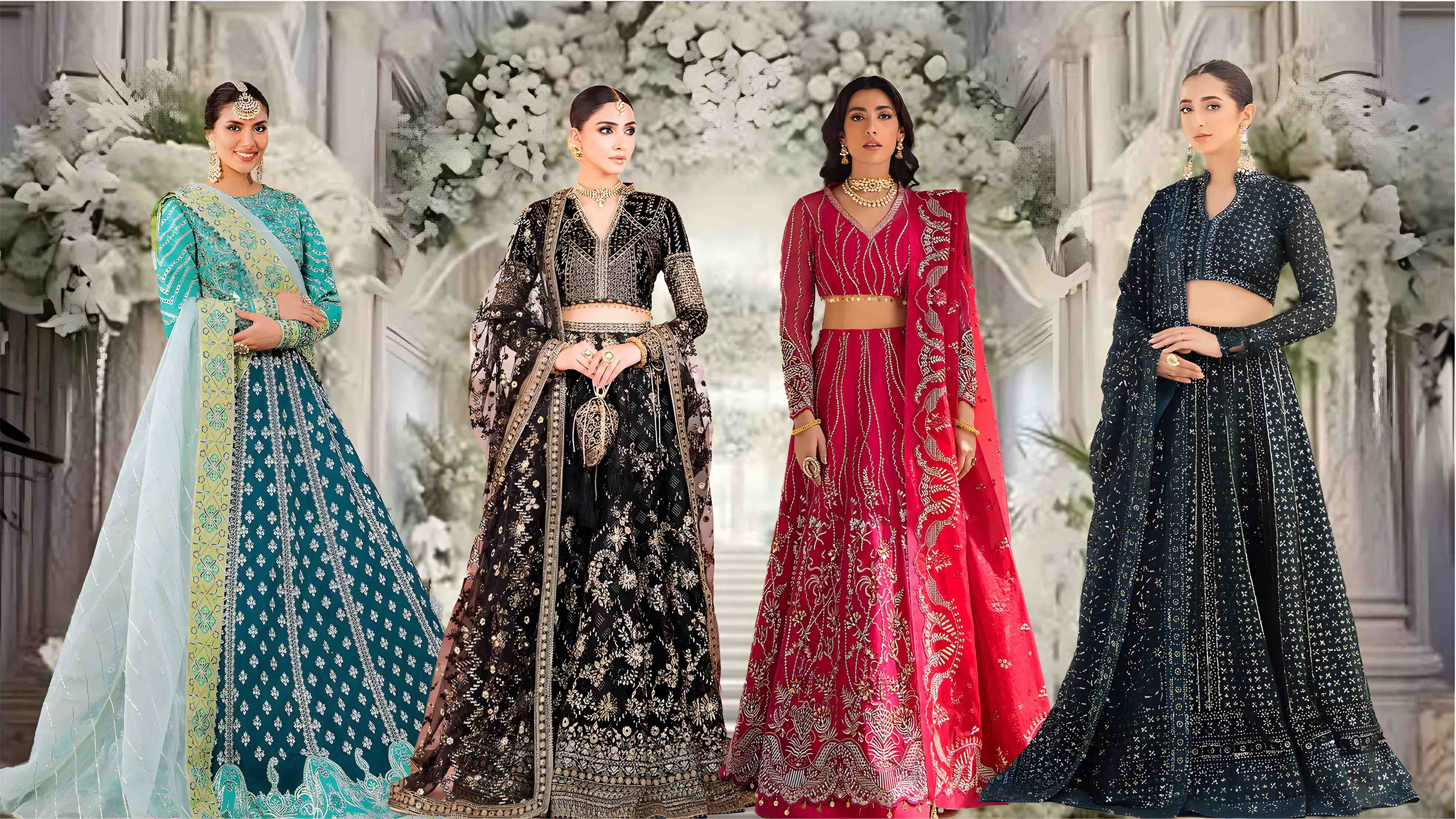
Comments (0)
No comments yet. Be the first to comment!